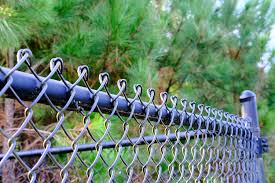Beyond their useful utility, fences keep significant symbolic relevance in human being communities, representing methods of possession, personal identity, and social boundaries. As physical symptoms of boundaries, fences design our perceptions of area and impact our connections with the built surroundings. Let’s check out the greater which means behind fences (ploty) and realize why these are more than just structures—they are symbols of human being tradition and society.
1. Acquisition and Territory:
Fences signify possession and territorial borders, marking exactly where one particular property ends and another begins. By determining boundaries, fences set up feelings of management and power over territory, strengthening specific or group personality. In rural places, fences function as concrete marker pens of property ownership, delineating areas, pastures, and house facial lines. In city settings, fences demarcate exclusive residence from open public room, asserting acquisition and exclusivity.
2. Interpersonal Section and Exclusion:
fences (ploty) may also stand for sociable divisions and exclusions inside of community. Great walls and barriers may indicate divorce and inequality, producing actual physical boundaries that break down communities according to socio-economical position or other elements. However, fences with open up gates and very low walls represent inclusivity and relationship, inviting connection and cultivating feelings of neighborhood. The design and exposure of fences reflect primary societal dynamics and energy buildings.
3. Societal Identity:
In numerous countries, fences keep serious societal value and they are imbued with significance that mirrors ethnic ideals and cultures. For instance, in some countries, elaborate fences are icons of standing and prestige, displaying wealth and affluence. As opposed, in other cultures, simple and easy useful fences could be appreciated for his or her practicality and utilitarianism. Comprehending the societal circumstance of fences allows us to value their symbolic importance in several communities.
4. Mental health Limitations:
Fences could also represent psychological limitations that determine individual room and autonomy. By making bodily boundaries, fences provide people with a sense of security and personal privacy, permitting them to create boundaries and manage entry to their private place. This feeling of limit handle is vital for sustaining mental well-getting and interpersonal relationships, because it enables men and women to assert their autonomy and safeguard their personal borders.
5. Ecological Affect:
The proliferation of fences has environment effects, particularly in natural panoramas and wildlife environments. Substantial fencing can fragment environments and affect wild animals corridors, influencing biodiversity and ecosystem health. Nevertheless, eco-friendly fencing alternatives, like animals-pleasant patterns and permeable barriers, offer you options that equilibrium human being needs with environmental conservation. By lessening their environmental footprint, fences can bring about the preservation of organic landscapes and animals environments.
To sum it up, fences are not only actual physical components they are icons that signify intricate sociable, social, and psychological dynamics. As guardians of boundaries, fences form individual interaction and landscapes, showing and reinforcing social ideals and norms. Admiring the symbolic need for fences improves our understanding of the built atmosphere and our partnership together with the land.
